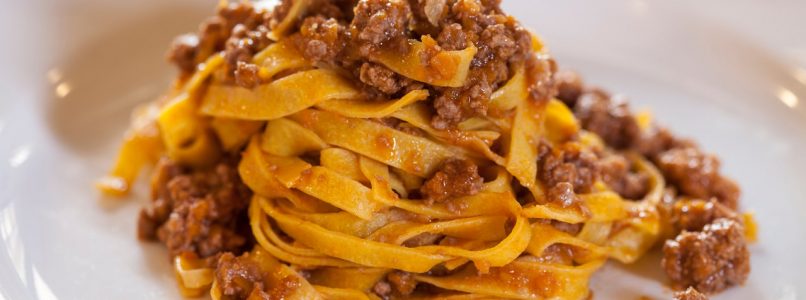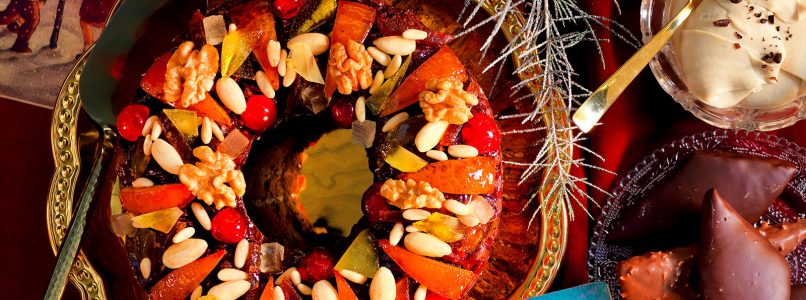Ready to taste Bologna The fat one?
«When you hear about Bolognese cuisine, make a reverence, because it deserves it. It’s a somewhat serious way of cooking, if you like, because the climate requires it; but succulent, tasteful and healthy.” Pellegrino Artusi, writer and father of Italian gastronomy (he is the author of the most popular Italian recipe book ever: Science in the kitchen and the art of eating well) had a weakness for the dishes of La Dotta – as well as Grassa and Rossa – also due to the fact that he was born in Forlimpopoli, an Emilian village and therefore the bell tower played an important role. When he began his monumental work, in 1891, Bologna was the paradise of taverns where you could «playing cards and drinking wine” as Francesco Guccini recounted a century later, in the name of hospitality and conviviality, with hours extended until late at night. Beautiful.
The kingdom of egg pasta
There is no denying it: there are fewer and fewer of them, both within the walls and just outside. But if the classic, fundamentalist version has almost disappeared, fortunately a good part of the values (culinary first and foremost) are carried forward by places where typicality is still well respected and the public appreciates the defense of tradition. Tagliatelle, lasagna, tortelloni and – obviously – tortellini: Bologna it is the kingdom of pasta and puff pastry, thin, ethereal and yet so present when tasted as to cause a pleasant and irrepressible addiction. Then there are passatelli, less known but delicious and satisfying thanks to the mixture of eggs, parmesan and breadcrumbs as well as the legendary Bolognese ragù. In trattorias, a great classic is represented by crescentine: a delicacy with a name that evokes a swollen pasta made with flour, milk, brewer’s yeast, salt and mineral water and fried in plenty of boiling lard. They arrive together with the cold cuts – mortadella first and foremost, sometimes even cut into cubes – during the appetizer or are nibbled at a snack, still warm.
Friggione and cutlet
Just like that of tagliatelle and ragù, the recipe for friggione has also been deposited at the Bologna Chamber of Commerce, so historic and venerated is its preparation. There are very few essential ingredients: white onions (macerated with a teaspoon of coarse salt and one of sugar for about four hours, then cooked for at least another two), peeled tomatoes and salt; the result is a sauce that makes every dish special, from toasted bread to the most elaborate dishes. The second most distinctive is the Bolognese cutlet: veal (or chicken) fried in lard, enriched with parmesan and ham, then baked again in the oven to assemble the ingredients. In winter, there is no shortage of Bolognese mixed boiled meat: to the classic cuts of beef, chicken and veal, veal tongue and head and pork cotechino are added, which must be cooked separately. To finish, a slice of rice cake – which in Bologna is called «Torta degli Addobbi – prepared with rice cooked in milk, eggs, sugar and lemon zest. Now follow us around the city in search of the last Petronian sanctuaries.
Bologna in 10 trattorias
Classic trattoria style, but with a refined mise en place and star service led by the owner Piero Pompili. The dishes enhance the opulence of Emilian cuisine. Some suggestions: potato and mortadella flan with parmesan cream, tagliatelle with Bolognese ragù, beef cheek braised with Sangiovese on mashed potatoes. The wine list is well thought out.
The ‘creature’ of Daniele Minarelli– awarded with the Slow Food Snail and the Tre Gamberi – remains an essential stop for those who want to try authentic Bolognese cuisine, enjoying a more refined than average environment. The selection of raw materials is excellent, especially cured meats, but you can’t skip the Bolognese cutlet and the tortellini in broth. Rich cellar.
One of the most pleasant places in the city, with a proposal that is very tied to tradition but not banal, so much so that it deserves the Slow Food Snail. Large space is reserved for small nearby producers, from whom flours, cheeses and cured meats are sourced. Tortellini in broth and Modena cow meat are always at the top. To close a great trifle. Always book, everyone likes it.
In the central area, but far from the confusion, a place that does not allow anything for re-elaborations or virtuosity. The first courses are all fresh pasta, in the classic formats: tagliatelle (in the photo, with nettles), tortellloni and tortellini. The second courses continue the journey: Petronian cutlet, friggione, meatballs. Rice cake to end on a sweet note, narrow but centered cellar.
A real must for those looking for quality food, precision in production and the desire to experiment with a “new” Bolognese cuisine. The menu is large and divided by theme: traditional dishes, 80s proposals, revisited tradition. The classics are really good: tagliatelle, tortellini, meatballs and the Petronian cutlet. But even the most innovative dishes such as the Bologna Beijing ravioli are convincing.
Curiosity: the program won4 Restaurants’ as the best traditional Bolognese trattoria. Thanks to the owner Elisa Rusconi, who two years ago took over the business founded by grandfather Danilo in 1937, revisiting the kitchen in a modern but welcoming environment. If the dish that has guaranteed its success is the Bolognese cutlet, the stuffed pastas are also excellent.
Right in the centre, an address that skilfully works on tradition by proposing and revisiting it in an intimate, refined and welcoming context, accompanied by a valid wine offering that also allows you to make purchases. The lasagna (pictured) is unmissable but the tagliatelle with meat sauce and the ‘botched’ macaroni are also excellent. Among the second courses, the cockerel with potatoes and truffle stands out.
In the outskirts of Bologna, there is the kingdom of chef Fabio Berti and maître Alessandro Gozzi, friends and partners who in 2007 decided to open a restaurant “with respect for tradition” and they succeeded. Dishes to order? The Bertozzi Gramigna with bacon, courgettes, saffron and flakes of Parmigiano Reggiano and the old-fashioned meatballs with peas. Pleasant environment.
One dish is enough, the ‘dirty face’ Gramignone, to understand that in this welcoming trattoria founded in 1956 – divided into rooms and rooms – you can enjoy the richness of Bolognese cuisine from the classic appetizer to the boiled meats in season, passing through lasagne and tortellini in broth . The choice of dessert is interesting with the timeless rice cake in pole position, in the family recipe.
Romantic and welcoming, it is a small restaurant in Borgo d’Azeglio, a stone’s throw from Piazza Maggiore. Cuisine that satisfies everyone: foreigners and Italians, VIPs on leave and locals from Bologna. Because the classic repertoire is well recited: Sangiovese starter and good cured meats, Passatore strozzapreti and house risotto, Bolognese cutlet and stewed meatballs.




